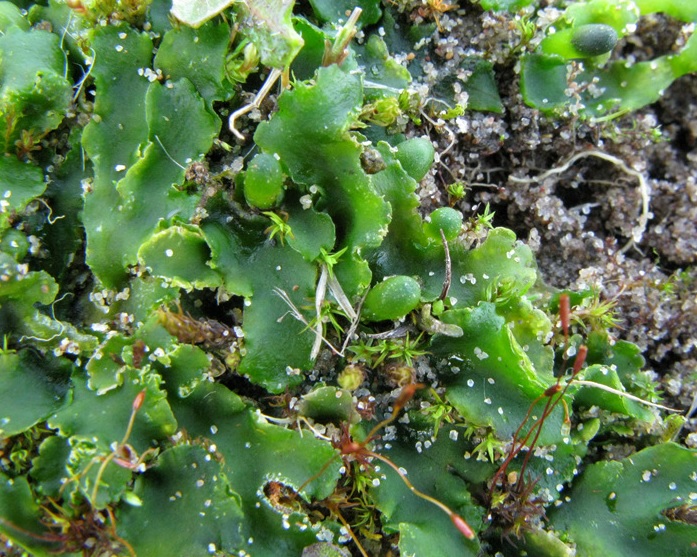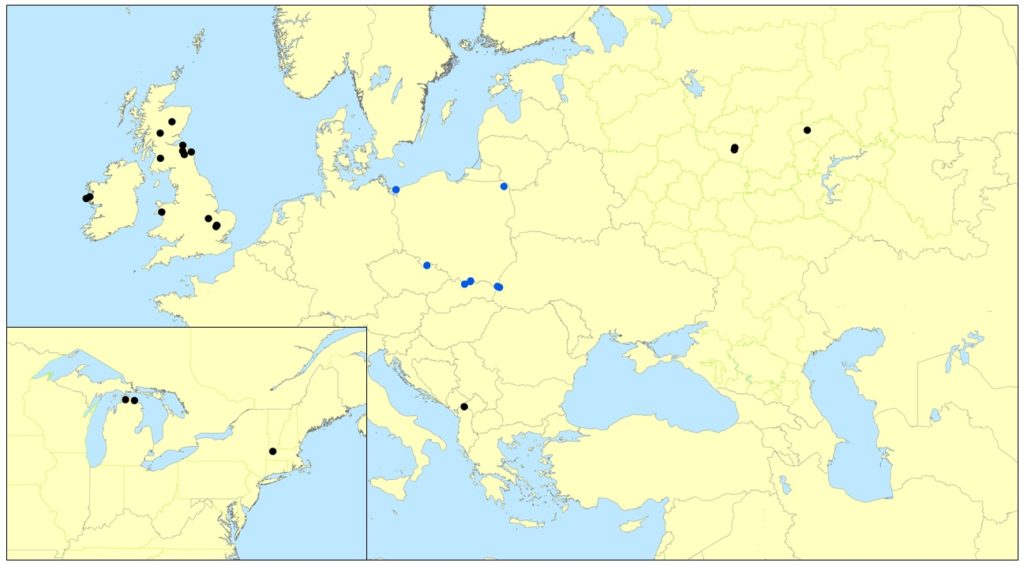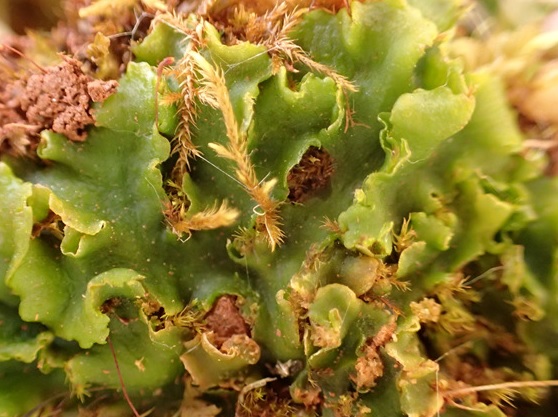The thalloid liverwort Aneura pinguis (L.) Dumort. (basionym Jungermannia pinguis L.) has been reported from a bewildering range of climates and habitats, from neotropical cloud forests to Scottish moorlands, in montane flushes and on sand dunes.

However, it has been clear for many years that in addition to the different ecologies, the name Aneura pinguis has been used to describe a wide range of plant morphologies. From the isozyme analyses in Bączkiewicz and Buczkowska (2005) to the DNA sequencing work in Bączkiewicz et al. (2017), genetic analyses have only served to reinforce this.
At the Botanics, we started out by taking a closer look at the diversity of Aneura within the UK, but expanded the project to include samples from other places and people, including a productive collaboration with researchers Kristian Hassel and Lars Söderström in Trondheim and Ana Séneca in Porto. Having built a DNA barcoding reference library for over 400 accessions of Aneura from around the world, our priority has been to do something useful with the data.
It’s no longer headline news that the name Aneura pinguis covers a complex of quite different species. Our puzzle was what to do with this. Having a team made up of a mixture of field bryologists, traditional taxonomists, morphologists and molecular biologists (and with each member of the team wearing at least a couple of these hats themselves), we have started at the problem in quite a traditional way, using nomenclature:
We could match the original description of the species Jungermannia pinguis L. to one of the genetic lineages within Aneura pinguis, using a collection of the plant from the part of England where the species was first described, and use this material as the epitype specimen for Aneura pinguis.
While of course people can still continue to use the name Aneura pinguis to refer to the entire species complex, it is now fixed to a relatively uncommon lineage that has been collected in damp calcareous meadows, dune slacks and on the floor of limestone quarries, and is currently only known from England, Scotland, Wales, Ireland, Albania, Poland, Russia and the north eastern USA (Connecticut and Michigan).

Despite having over 20 Aneura collections from Portugal, and over 60 from Norway, we have not yet found this lineage in either country, although we are confident that the gaps in our current known distribution will rapidly contract with new records.
_______________________________________________
The Aneura pinguis DNA barcode data that we based this study on is openly available from the Barcode of Life database, BOLD.
_______________________________________________
REFERENCES
Bączkiewicz A, Buczkowska K. 2005. Genetic variability of the Aneura pinguis complex (Hepaticae) in central and western Europe. Biological Letters. 42:61–72.
Bączkiewicz A, Szczecińska M, Sawicki J, Stebel A, Buczkowska K. 2017. DNA barcoding, ecology and geography of the cryptic species of Aneura pinguis and their relationships with Aneura maxima and Aneura mirabilis (Metzgeriales, Marchantiophyta). PLoS ONE 12(12):e0188837.
Long DG, Forrest LL, Hassel K, Séneca A, Söderström L. 2023. Typification of Jungermannia pinguis L. (Marchantiophyta, Aneuraceae). EDINBURGH JOURNAL OF BOTANY 80, Article 1932: 1–11.

